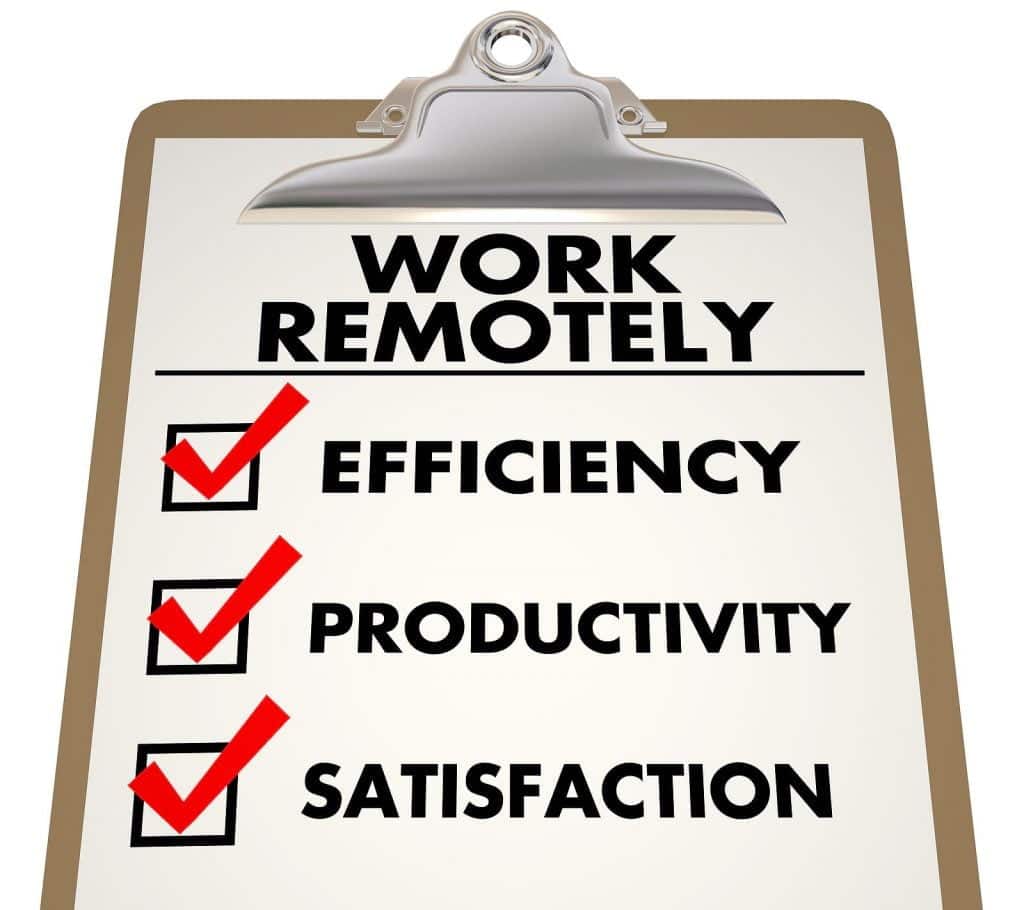Reduced freedom of movement is one of the most disruptive effects of the ongoing COVID-19 pandemic — and it affects both individuals and corporate bodies alike. People are having to negotiate and implement practical ways to work from home while retaining some form of life balance. And for enterprises with staff working from home, rules and operating procedures must be put in place to make sure that everyone remains on message, in the loop, and effectively working for the good of the organization.
Table of Contents
ToggleWith this in mind, what’s the best work from home or WFH setup? How can employers establish the best work from home rules for their staff — and how can those employees implement WFH best practices that enable them to get the most out of what for many may be a new working environment?

In this WFH 2020 best practices guide, we’ll offer WFH tips, exploring some WFH guidelines that will enable organizations to set up a comprehensive and adaptable WFH policy and provide telecommuting tips to help remote workers establish their best WFH setup.
Work from Home or WFH Tips
We’ll begin this WFH guide with some tips on how to work from home effectively. Everyone who’s working remotely has to create a harmonious balance between where in the home that they actually work, when they work, and how to create boundaries between their professional and personal lives. This applies from the lowliest clerk to the top management levels: because of the COVID-19 situation, all levels of the corporate hierarchy are effectively in the same physical situation. And the following recommendations apply equally to all.
Create A Start-Up Routine
Develop a daily ritual or set of actions that clearly signal that you’re ready to begin your working day. This might be something as simple as eating a distraction-free breakfast, prepping your WFH office space, or dressing up in your designated WFH outfit.
Over time, this will set up a natural rhythm within you that kick-starts you for productive work.
Keep Regular Hours
Establishing clear guidelines for when to begin working each day and when to quit helps many remote workers maintain a healthier work-life balance. Complications can arise due to demanding deadlines, clients or customers in different time zones, and other factors. To allow for this, your scheduled working day needs some degree of flexibility. So if you’re forced to start early or late, you may need to cut down or extend your hours to compensate.
Try to figure out at what times of day you’re most productive, and reserve these high-performance periods for your most important tasks.
Important Work From Home Tip: Establish Some Boundaries
With others likely inhabiting the home space with you, it’s essential to set clear signals and boundaries that let kids, partners, pets, or other housemates know that you’re in the office and shouldn’t be disturbed.
Take Scheduled Breaks
If you work for a company that has established rules for break times, take advantage of them. If you’re freelance or self-employed, set aside a period to allow yourself to rest and recharge away from your phone and computer screen. For full-time US employees, two 15-minute breaks and a lunch hour each day are standard, so you may take this as a starting point.
Have A Dedicated Work Space When You Work From Home
If you can’t set aside a discrete home office, do as much as you can to designate a specific area of the home as your work area. Your employer may provide dedicated equipment (such as a laptop and mobile phone), which should be used exclusively for business purposes. Otherwise, establish a clear separation between personal files, applications, and data storage, and those you use for business.
Take Precautions to Guard Your Data and Privacy
Whenever you’re connected to a wireless or mobile network that you don’t control, use a Virtual Private Network (VPN) connection. Some employers have their own VPNs for internal use by members of the organization, requiring off-site employees to access certain servers or websites that store enterprise information.
Take Advantage of Online Resources
Internet connectivity is very much at the heart of today’s work from home culture, and the web and mobile networks provide ample opportunities for gaining access to valuable tools, knowledge, and opportunities to communicate. Whether it’s training materials, research data, video conferences, or virtual happy hour, you should use the internet to make your voice heard, trade views and information, and improve your prospects.
Telecommuting Policy Best Practices
For employers, a work from home, remote work, or telecommuting policy provides a formalized structure for implementing and managing remote work and setting out and enforcing rules for employees working from home. And in situations where the corporate office is the primary working place (e.g., before COVID-19), a WFH policy document also outlines the steps employers and employees need to follow in order to apply for and approve work from home privileges.

The following recommendations offer guidelines and best practices for establishing and managing an enterprise telecommuting policy.
Define Your Request and Approval Processes
Pre-COVID, the policy would include guidelines to let employees know whether they’re eligible to work from home, protocols for communicating their at-home status to others in the organization, and formal channels for making their work from home requests. As the pandemic’s management creates new conditions, some businesses may return to their offices, making these requests and approval processes a necessary part of corporate planning.
While remote working persists as the dominant model, the policy should also include formal channels for request and approval of other services, such as IT support, equipment, and formal consultations with management.
Formalize Working and Non-Working Hours for WFH
Every WFH policy should indicate when employees are expected to be working, and also the times when they shouldn’t be.
Set Standards for Internal Communications
The policy should include accepted practices and standards for internal communication channels to avoid workers being overwhelmed and distracted by constant streams of email, instant messages, or texts.
Set Out Clear Meeting and Event Schedules
The policy should include a clear medium for communicating the dates, times, and relevant details of important meetings and events. This might take the form of a centralized calendar with video conferencing links.
Establish Help Desk and Tech Support Protocols
As well as setting out the formal channels for help and support requests, it’s important to specify when and how your workers can get in touch with IT and other support services.
Establish and Implement Security Standards for Work From Home / Remote Workers
Foster a culture of security awareness, and regularly confirm that all employees have the latest versions of the necessary security or encryption software loaded onto their devices.
Provide Additional Resources
Besides data relating to work and ongoing projects, remote workers can also benefit from information and guidelines on other issues. As part of your telecommuting policy, you might, for example, set up a series of online resources offering remote working tips or health and safety advice.
Accept Feedback and Refine the Policy
Ask for feedback and input on the policies in place, make updates based on these observations when necessary, and communicate all stakeholder changes.





